Recommendation points
- SDS Shank – Simple Ingenious
- Types of cutting heads
- Spiral grooves and features of the working part
- Rock drill bit sizes
- Which borax are the most durable
Hardware stores are full of assortment of rock drill bits of all sizes and types, which inevitably misleads the inexperienced craftsman. In this article we will tell you what are the distinguishing features of concrete drills and which varieties are optimal for your tasks..
SDS Shank – Simple Ingenious
A distinctive feature of rock drill bits is a special shank shape with multiple flutes. It is part of a special guiding system that effectively transfers rotation, shock vibration to the drill and maintains alignment with the drive spindle.
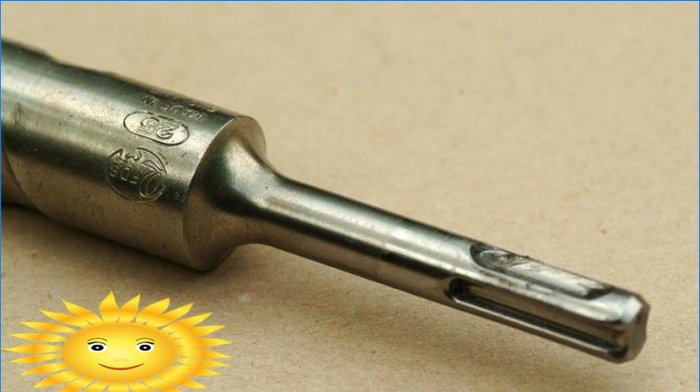
There are five varieties of SDS shanks, but only two are common: SDS-Plus and SDS-Max. They differ in the number of grooves (SDS-Max has five instead of four) and in size, SDS-Plus is about twice thinner. SDS-Max shanks are available for drills and bits from 20 mm, while SDS-Plus is used for drilling holes up to 26 mm.
Types of cutting heads
Most of the qualities described for rock drills do not apply to small diameters and products used for domestic purposes and occasionally. However, when it comes to wide holes and working with granite and prestressed concrete, the quality and ease of drilling depends entirely on the carbide tip..
Most small and some large drills have a shovel-shaped head with two equal edges sharpened at an obtuse angle. When drilling, the hole will have a large take-off in the nominal diameter, and the drill will constantly overheat. For heavy and high-strength concrete or stone, such drills are not suitable.
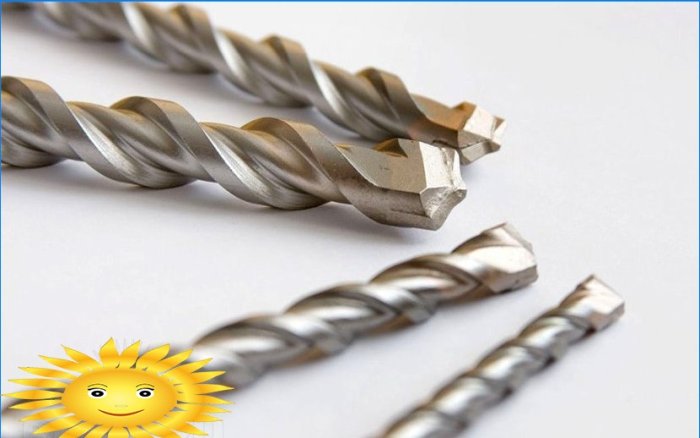
The second option is tetrahedral and hexagonal cutting heads. The tip of such a drill consists of several smaller carbide taps. Their location and sharpening angles are specially selected in such a way as to disperse shock loading. By and large, only such drills can be used for drilling reinforced concrete, they grind steel rods well and do not break the hole so much.
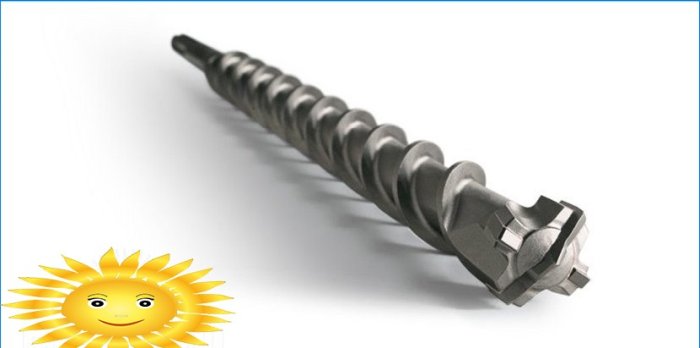
The shape of the sharpening of polyhedral heads can be stepped or wavy. The latter crushes almost any material into dust, and neither steel nor granite stone will be an obstacle for them. Just do not let yourself be bribed with a low price: for cheap products, the solder that fixes the solders melts at the slightest heating. Even branded certified products can suffer from this, but a slight distortion and complete separation of the soldering are not the same.
As a special case, the shape of a polyhedral head with a centering spike and a parabolic shape of cutting edges can be cited. This is the most expensive and high quality type of drill. They are used for drilling heavy concrete with high accuracy, the drill practically does not break the hole.
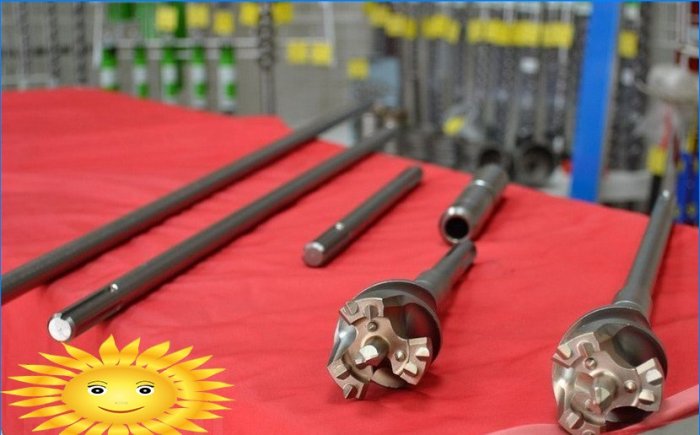
Spiral grooves and features of the working part
While the carbide tip determines the speed and ease of drilling, then the maximum hole depth depends on the form factor of the bit. There are three varieties in total.
Auger drills are the most common, this is the golden mean. The drill has a medium depth and slope of the dust-evacuating grooves, therefore it efficiently evacuates cuttings from most holes. The absence of thinning will not allow such a drill to bend or fold. However, at a high drilling speed, the auger working part will not cope with dust removal, hence overheating and the need to clean up holes.
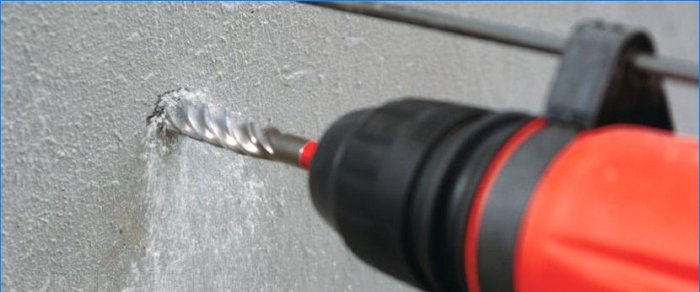
The second type of drill has pronounced grooves with a frequent helix pitch and great depth. These drills are used for drilling soft plaster and brick walls. Due to the thin neck, the drill does not cope well with hard concrete, but the abundant sludge is removed from the hole very well. In technical language, such drills are called “with a large slope of the working grooves.” The thin core of these drills affects drilling performance only at small diameters. Drills larger than 14 mm already have enough “body” to handle a hole in hard materials, most long reinforced concrete drills have this shape.
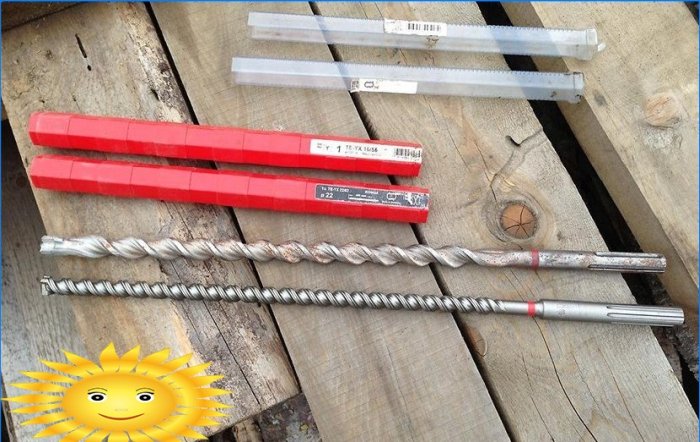
The third type is drills with a small slope and a shallow depth of working grooves. Actually, there can be several grooves themselves, that is, the spiral can be double-sided and multi-row. Typically, this shape is produced in medium and short length drills, the benefit of flat grooves is especially pronounced when drilling many small holes..
The last two types are characterized by almost complete absence of dust in the hole made..
Rock drill bit sizes
SDS-Plus drills have even diameters ranging from 6mm to 26mm. There are also drills for concrete with a thickness of 4 and 5 mm, but these are special cases. For each diameter there is a limit value for the length, and although many manufacturers deviate from the standards, the deviation from the norm is insignificant:
- diameter 6, 8 mm – length from 40 to 180 mm;
- diameter 10–16 mm – length from 120 to 300 mm;
- diameter 18–26 mm – length from 240 to 1000 mm.
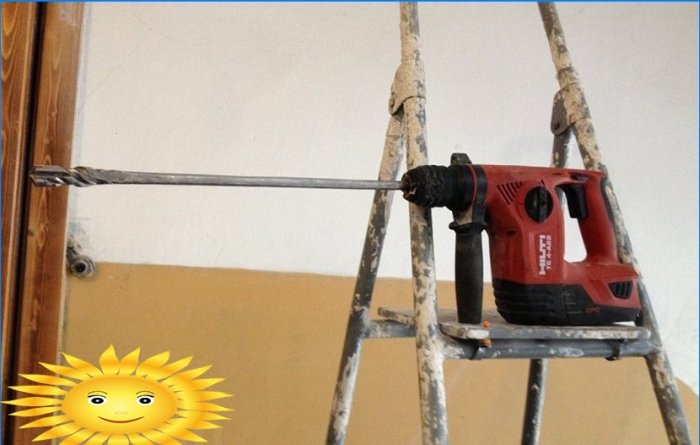
Drills up to and including 12 mm thick are used, as a rule, for making fastening holes. Thicker drills drill through holes for technical communications wires.
The standard SDS-Max sizes clearly show that these drills are suitable for deep drilling. The diameter can vary from 12 to 50 mm and the length is usually 600 to 1000 mm. There are also longer drills and even extensions that are ideal for making technical ducts in in-situ concrete. It should be clarified that SDS-Max drills represent a professional line of accessories and it is simply pointless to use them with adapters on household rotary hammers – the tool will not produce the required power.
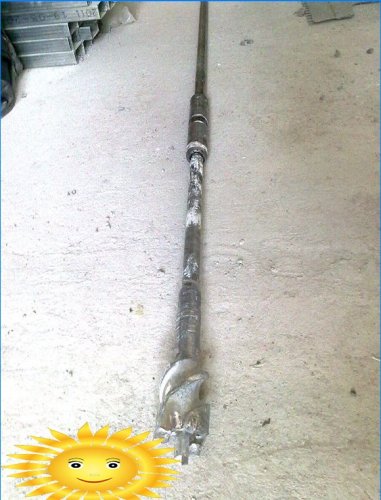
Which borax are the most durable
There are several proven brands of borax for professional use on an industrial scale. This includes both the narrow-profile equipment Hilti, Keil, Alpen, and the more common Bosch, Makita or AEG. The country of production does not have a decisive importance; Chinese factories make products that are quite adequate in quality. The main thing is that the manufacturer is certified, and there will not be even two dozen of them in the world..
Much also depends on the drilling technique. Excessive effort and lack of control over the tool during operation lead to “eating out” of the guide grooves and unsuitability of the shank, the drill starts to fall out even from a working chuck.
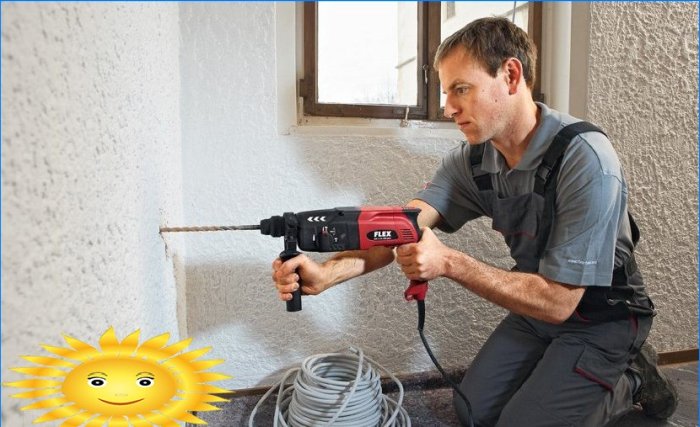
For drilling frequent small holes, drills with two equal edges are better suited, they can be easily brought on an emery wheel if they are dull. For large holes in dense materials, use polyhedral heads. Some of them can be suitably hardened and sharpened so as not to dull when working. In the catalogs, these drills are called self-sharpening..
Also remember that it is critical for both the drill and the tool chuck to have a lubricant on the shank to compensate for frictional heat. Sometimes it will also not be superfluous to periodically wet large and deep holes with water in order to partially eliminate heating of the drill and carbide brazing..

Can anyone offer some advice on how to choose the right concrete drill for a hammer drill? I’m not sure what factors to consider or what features are important. Any recommendations on brands or specific models would be appreciated. Thanks in advance!
How do I determine which concrete drill bit is suitable for use in a hammer drill?
I’d like to know more about the factors I should consider when choosing a concrete drill for a hammer drill. Are there specific features or specifications that I should pay attention to? Any recommendations on brands or types of drills that are most effective for drilling into concrete? Thank you!